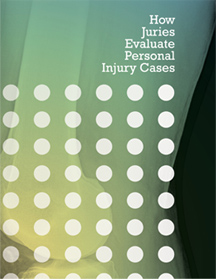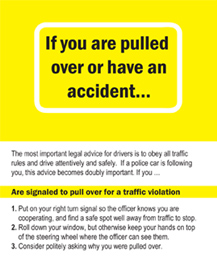Opening statement
After the jury is selected, trials typically begin with the plaintiff’s personal injury lawyer making an opening statement that describes the lawsuit in some way to the jury.
Since the opening statement is made by the lawyer and does not involve witnesses, it does not really present any evidence, but it is based on the evidence that the lawyer expects to present later.
Some of the goals of an opening statement are to give the jurors an overview of the lawsuit so that they will be able to understand and appreciate the issues, and to develop a rapport or relationship with the jurors so that they have a favorable opinion of the lawyer and the lawyer’s client.
Therefore, opening statements preview the facts and help the jurors relate to the person whom the lawyer represents.
Car accident sample opening statement
[Every opening statement is different because each one describes a specific situation. The following is a sample opening statement that was used in a car accident lawsuit where a plaintiff suffered significant injuries. The names of the plaintiff and his wife have been removed.]
Not so long ago in a small rural county, not unlike our own, there was a little boy. He did not go to the type of schools attended by other children. In fact, his schooling took place in the fields, where he worked alongside his family — fields owned by someone else. Every day he dreamed of leaving those fields, fields which were “postcard pretty” to those who did not labor there. He wished he could take his family with him. At the age of seventeen, he joined the Navy to escape the land that had for generations imprisoned his ancestors.
While serving his country, this young man received an opportunity of a lifetime. He was sent to a naval mapmaking school where he graduated at the top of his class. After being honorably discharged from the Navy, he continued this trade as a government employee. It was a source of dignity, as well as a source of hope for the future of his children.
On the first day of July, 20__, as this man, now 45 years of age, left his work of some twenty years, and he knew he was indeed a fortunate fellow. He had a wonderful wife, [Name], two lovely young children, and an excellent job. All of this was his as he traveled down Route 20 at approximately 6:30 p.m. In that place and at that time the inattention of this defendant would forever destroy the work and the dream of a lifetime. The work and the dream of [Name].
This collision was caused when the defendant crossed the centerline, striking [Name]’s vehicle. The defendant will deny this and will bring you the testimony of someone who was two football fields away, with an extremely limited view, to say that the accident occurred in the defendant’s lane. To the contrary, the physical evidence on the roadway, the fluid from the radiators, the glass, the metal, and the gouges which occur at the place where vehicles come together clearly demonstrate a collision in [Name]’s lane. An engineer who studies collisions will tell you the physical evidence on the roadway allows for no other scientific explanation.
In this collision, [Name] suffered a disc injury to his neck. This injury prevents him from leaning over a drafting table—which is essential to his work. Admiral [Name] will tell you what it felt like to have to terminate this man after twenty years of dedicated service. You will hear how [Name] fought in pain to try to keep his job. You will hear about the day he went to the office and was told to go home. You will hear how this proud man’s voice cracked when he said goodbye.
This limitation caused the government to terminate [Name] from his job in spite of some twenty years of dedicated service. The defendant will deny the seriousness of the injury. He will bring in this courtroom a doctor, who was selected by his lawyer, and who saw [Name] on only one occasion. That doctor will also tell you that some of [Name]’s injuries were pre-existing and that the remainder were caused because he did not wear a seatbelt.
In contrast, [Name]’s treating physician, who is the specialist recommended by the emergency room doctor, saw [Name] on twenty-one occasions. The treating physician will tell you the significance of the disk injury and that bending the neck repeatedly throughout an eight-hour work day would cause continued deterioration to a neck that is already unstable. The treating physician will tell you that although [Name] had previously seen a chiropractor, his last visit was more than ten years ago, and that that treatment was unrelated to his current disability. The treating physician will also tell you that the forces in the collision are responsible for [Name]’s injury, forces that would have been applied to the neck whether or not a seatbelt was worn. [Name]’s disc will ultimately collapse, requiring spinal surgery. He will suffer restriction of motion and pain for the rest of his life.
At the time of this accident, [Name] was earning in excess of $80,000 per year. You will learn that [Name], in an effort to continue to support his family, has been forced to take a job consistent with his physical limitations and educational background. The new job pays $30,000 a year. This loss, $50,000 a year, has caused [Name] and [Wife] to lose their home, has forced the children to change their school, and has summoned the bill collectors to do their work. [Name]’s dream has become a nightmare!



